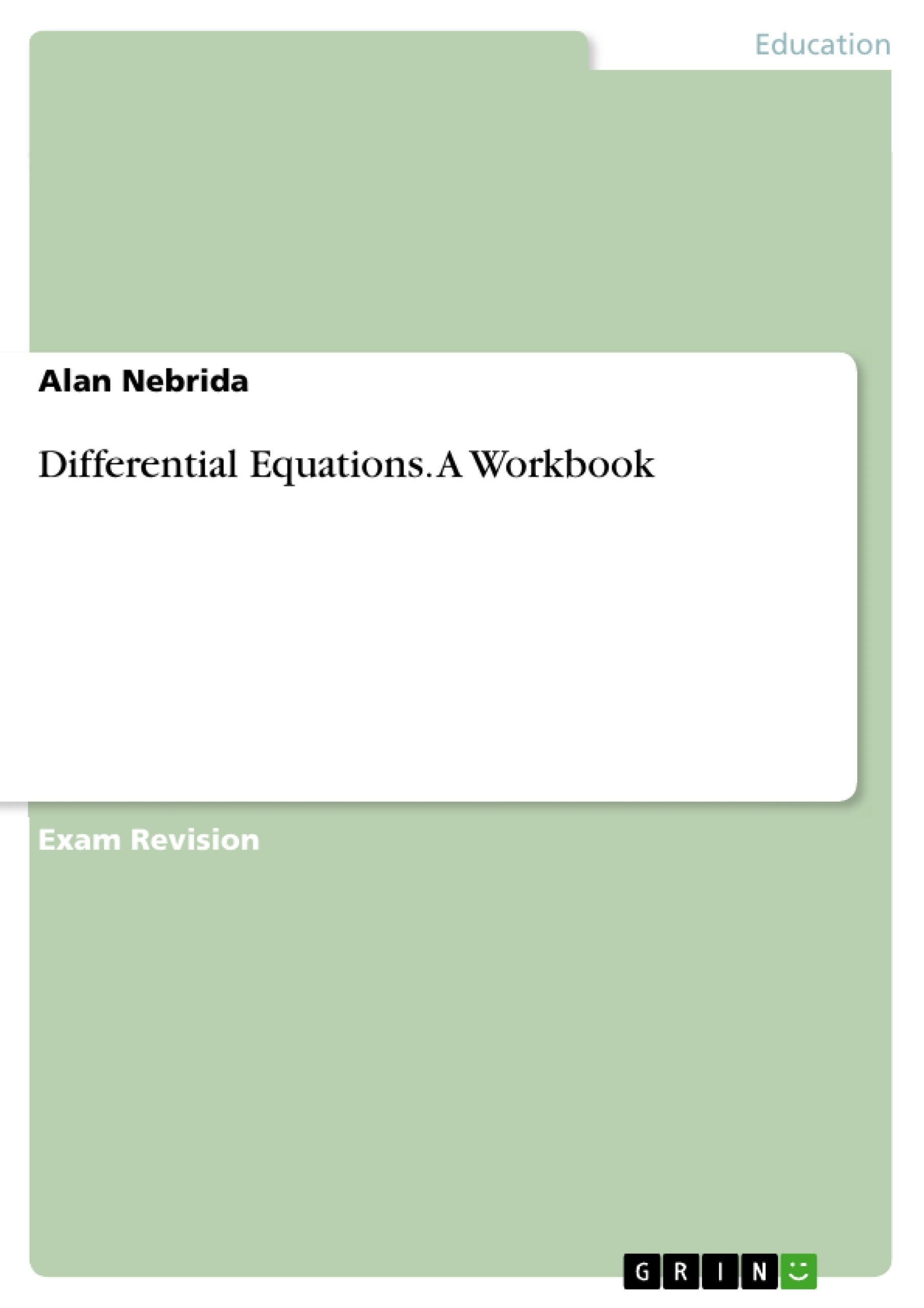Generally, students enrolled in Elementary Differential Equations courses are poorly prepared for rigorous treatment of the subject. I tried to alleviate this problem by isolating the material that requires greater sophistication than that normally acquired in the first year of calculus. The emphasis throughout is on making the work text readable by frequent examples and by including enough steps in working problems so that students will not be bogged down with complicated calculations.
This worktext has been written with the following objectives:
1. To provide in an elementary manner a reasonable understanding of differential equations for students of engineering and students of mathematics who are interested in applying their fields. Illustrative examples and practice problems are used throughout to help facilitate understanding. Whatever possible, stress is on motivation rather than following rules.
2. To demonstrate how differential equations can be useful in solving many types of problems – in particular, to show students how to: (a) translate problems into the language of differential equations, i.e. set up mathematical formulations of problems; (b) solve the resulting differential equations subject to given conditions; (c) interpret the solutions obtained.
3. To separate the theory of differential equations from their applications so as to give ample attention to each. This is accomplished by threatening theory and applications in separate lessons, particularly in early lessons of the coursebook. This is done for two reasons; First, from a pedagogical viewpoint, it seems inadvisable to mix theory and applications at an early stage since the students usually find applied problems difficult to formulate mathematically, and when they are forced to do this in addition to learning techniques for solution, it generally turns out that they learned neither effectively. By treating theory without applications and then gradually broadening out to applications (at the same time reviewing theory) the students may better master both since their attention is thereby focused only in one thing at a time. A second reason for separating theory and applications is enable instructors who may wish to present a minimum of applications to do so conveniently without being in the awkward position of having to skip around in lessons.
- Quote paper
- Alan Nebrida (Author), 2022, Differential Equations. A Workbook, Munich, GRIN Verlag, https://www.grin.com/document/1277813
-

-

-

-
Upload your own papers! Earn money and win an iPhone X. -

-
Upload your own papers! Earn money and win an iPhone X. -

-
Upload your own papers! Earn money and win an iPhone X. -

-
Upload your own papers! Earn money and win an iPhone X. -

-
Upload your own papers! Earn money and win an iPhone X. -

-
Upload your own papers! Earn money and win an iPhone X. -

-
Upload your own papers! Earn money and win an iPhone X. -

-
Upload your own papers! Earn money and win an iPhone X. -

-
Upload your own papers! Earn money and win an iPhone X. -

-
Upload your own papers! Earn money and win an iPhone X. -

-
Upload your own papers! Earn money and win an iPhone X. -

-
Upload your own papers! Earn money and win an iPhone X. -

-
Upload your own papers! Earn money and win an iPhone X. -

-
Upload your own papers! Earn money and win an iPhone X. -

-
Upload your own papers! Earn money and win an iPhone X. -

-
Upload your own papers! Earn money and win an iPhone X. -

-
Upload your own papers! Earn money and win an iPhone X. -

-
Upload your own papers! Earn money and win an iPhone X. -

-
Upload your own papers! Earn money and win an iPhone X. -

-
Upload your own papers! Earn money and win an iPhone X. -

-
Upload your own papers! Earn money and win an iPhone X.

